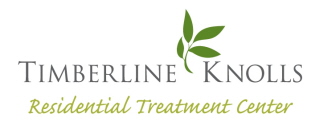
Contributor: Staff of Timberline Knolls Residential Treatment Center
Addiction and substance use disorders are sadly stigmatized in a manner that overlooks countless individuals who may be struggling with these potentially fatal diseases. The reality is that addiction can affect a person regardless of their age, sex, gender, socioeconomic status, culture, ethnicity, religion, and other factors. But, addiction in the workplace affects both the employee and the employer.
One facet of the addiction community that is sadly overlooked includes employees in the workforce who may appear to be high-functioning, often giving little indication of an addiction problem. The reality is that substance use disorders, including the national opioid addiction epidemic, is permeating countless businesses via its employees.
Addiction in the Workforce
A national survey completed by the Substance Abuse and Mental Health Services Administration (SAMHSA) found that more than 70 percent of individuals with illicit drug or alcohol use continue to maintain employment [1]. This translates into millions of employees who may be engaging in problematic substance abuse behaviors, either on or off the job.

Research has estimated that over 2 million Americans used illicit drugs during work hours, while approximately 3 million workers used an illicit drug within two hours of reporting to work. Additionally, 2 million workers used illicit drugs during lunch breaks, according to a national survey [2].
This also demonstrates how a majority of individuals who are struggling with an addiction or substance use disorder will attempt to continue functioning normally, though the repercussions of addiction in the workforce are devastating to businesses and employers alike.
Research has also found that substance use disorders in the workforce vary by occupation, with the highest rates of alcohol abuse and illicit drug use observed among employees in the following work industries:
- Entertainment
- Arts
- Construction
- Food service
- Media occupations
- Design
- Sports [3].
Impact of Addiction in the Workplace
Dealing with substance abuse in the workplace can be significantly challenging for many employers and business owners, but the consequences are more difficult to ignore.
The National Safety Council (NSC), which is a nonprofit organization that promotes safety and health, devised a method for calculating the estimated costs of addiction in the workforce, using factors like health care costs, job turnover and retraining, and time lost from work.
According to the NSC calculations, addiction and substance abuse in the workplace are costing employers over $40 billion nationwide, including the cost of “lost production” [3].
While employees dealing with a substance use disorder may feel as though they are able to maintain normal “functioning” on the job, productivity is typically hindered along with a number of other health consequences.
Other issues that impact the workplace as a whole as a result of alcohol abuse and/or illicit drug use include increased incidences of absenteeism, negative impact on a company’s reputation, and higher rates of job turnover compared to those with no substance abuse [4].
Substance abuse on the job has also been associated with fatal occupational injuries. The issue of substance use disorders in the workforce is something that impacts employee culture, employers and business owners, the overall company, and the economy as a whole.
Addiction Recovery Treatment
Facing the reality of substance use disorders among employees can feel uncomfortable and complicated for many business owners, but the consequences of ignoring these complex issues are far more detrimental.
Thankfully, there are several resources and programs available that can help employers more effectively address the issue of addiction in the American workforce, with workplace prevention and intervention programs being an effective method for addressing substance use among employees.
The Employee Assistance Programs (EAPs) is one resource that has been shown to be highly effective in addressing addiction issues, as this organization offers short-term counseling and treatment referrals, though not all businesses are able to offer this as a resource.
 Organization involvement in this growing issue can also help in establishing creative ways for providing resources and needed education to employees who may be potentially dealing with substance abuse issues.
Organization involvement in this growing issue can also help in establishing creative ways for providing resources and needed education to employees who may be potentially dealing with substance abuse issues.
Research has found that when treatment for addiction is facilitated within or by the workplace, there is greater success in addressing workplace conflict, decreasing absenteeism rates, increasing productivity, and increasing employees’ overall well-being [5].
Recovery efforts for substance abuse disorders and addiction can begin at work, especially when employees have resources readily available for early intervention and treatment.
References:
[1]: Substance Abuse and Mental Health Services Administration, Results from the 2011 National Survey on Drug Use and Health: Mental Health Findings, NSDUH Series H-45, HHS Publication No. (SMA) 12-4725. Rockville, MD: Substance Abuse and Mental Health Services Administration, 2012 Accessed 30 June 2017
[2]: Frone, M. R. (2006b). Prevalence and distribution of illicit drug use in the workforce and in the workplace. Findings and implications from a U.S. national survey. Journal of Applied Psychology, 91(4), 856-849.
[3]: Culhane, Holly. “Employers paying heavy price for opioid epidemic”, http://www.bakersfield.com/kern-business-journal/employers-paying-heavy-price-for-opioid-epidemic/article_a7baf2bb-103c-50d1-a719-4177e637c129.html Accessed 30 June 2017
[4]: Substance Abuse and Mental Health Services Administration. (2008). Results from the 2007 National Survey on Drug Use and Health: National Findings (Office of Applied Studies, NSDUH Series H-34, DHHS Publication No. SMA 08-4343) Rockville, MD: Author.
[5]: Slaymaker, V.J, et al. Employed men and women substance abusers: Job troubles and treatment outcomes. Journal of Substance Abuse Treatment (2006) 64, 570-578
Thank you to Timberline Knolls for providing this article.

(Advertisement)
Timberline Knolls is a leading residential treatment center for women and adolescent girls, ages 12 and older, with eating disorders, substance abuse, trauma, mood and co-occurring disorders. Located in suburban Chicago, residents receive excellent clinical care from a highly trained professional staff on a picturesque 43-acre wooded campus. An adult partial hospitalization program (PHP) is also available in nearby Orland Park, Ill., for women to step down or direct admit. For more information on Timberline Knolls Residential Treatment Center, call 630-755-5173. We are also on Facebook – Timberline Knolls, LinkedIn – Timberline Knolls and Twitter – @TimberlineToday.
The opinions and views of our guest contributors are shared to provide a broad perspective of addictions. These are not necessarily the views of Addiction Hope, but an effort to offer a discussion of various issues by different concerned individuals.
We at Addiction Hope understand that addictions result from multiple physical, emotional, environmental, and genetic factors. If you or a loved one are suffering from an addiction, please know that there is hope for you, and seek immediate professional help.
Published on August 4, 2017
Reviewed and Updated by Jacquelyn Ekern, MS, LPC on January 12, 2021
Published on AddictionHope.com
